Yellow-Rumped Cacique
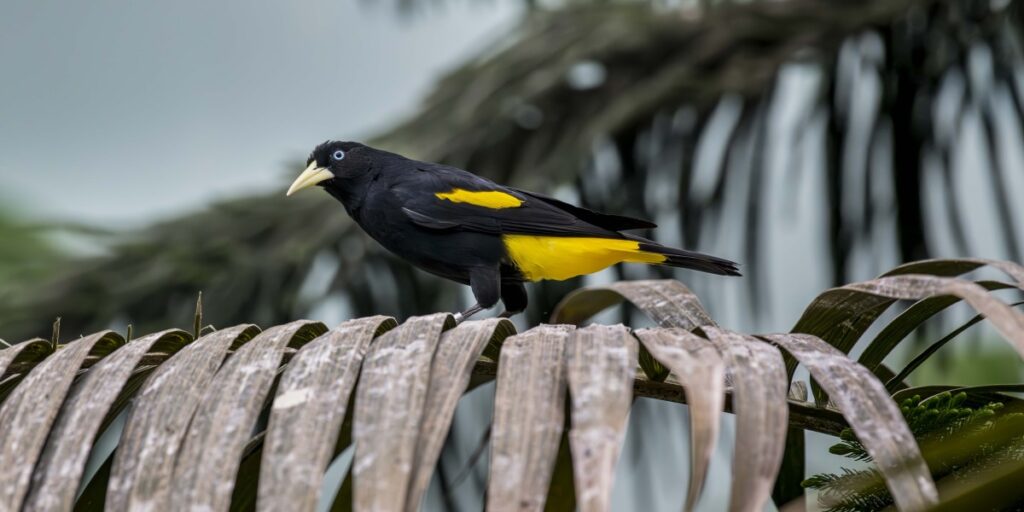
These birds are named for the bright, yellow patch of feathers over their rump. They are very social and known to flock with other yellow-rumped caciques and birds of other species with similar diets. The adults mostly eat insects but will supplement their diet with fruit, nuts, and seeds.
Green Heron
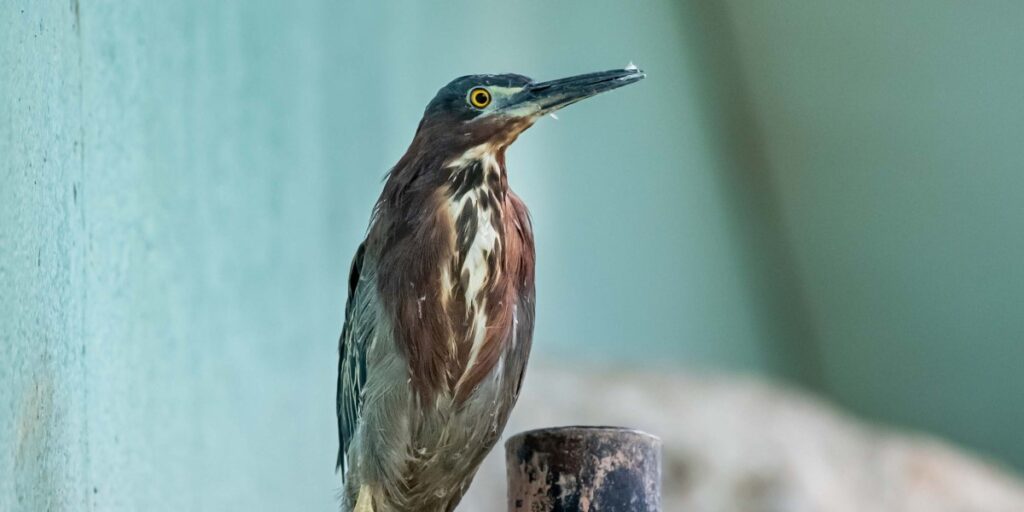
The green heron is short and stocky and has a crow-like appearance. They stand very still in the water to feed on prey within reach. Sometimes they drop small objects or insects on the water’s surface to attract fish to eat.
Greater Rhea
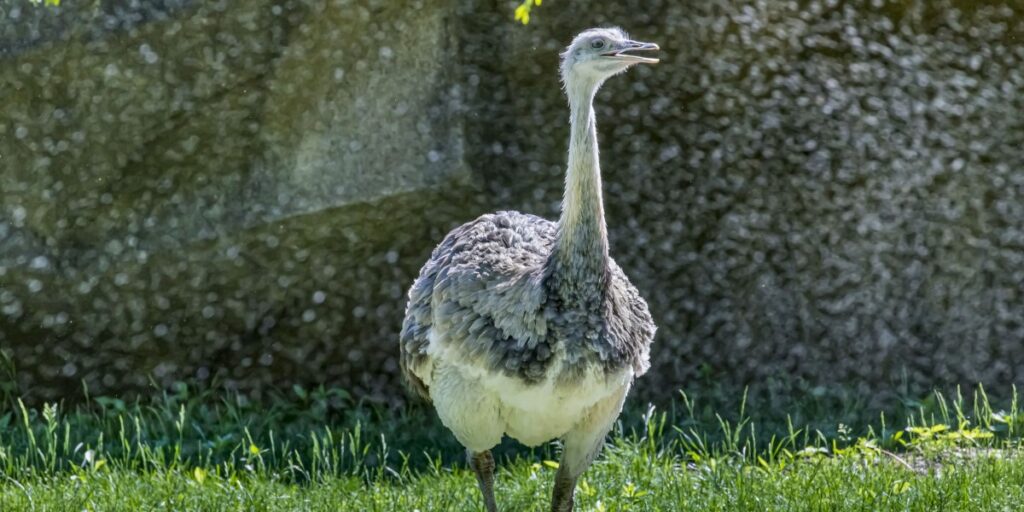
Greater rheas look similar to ostriches but are much smaller. Rheas have three toes on each foot, while ostriches have two. Rheas are flightless birds that can run up to 40 miles per hour. They have unusually long wings for flightless birds, which are used to avoid predators and for balance while running.
Hamerkop
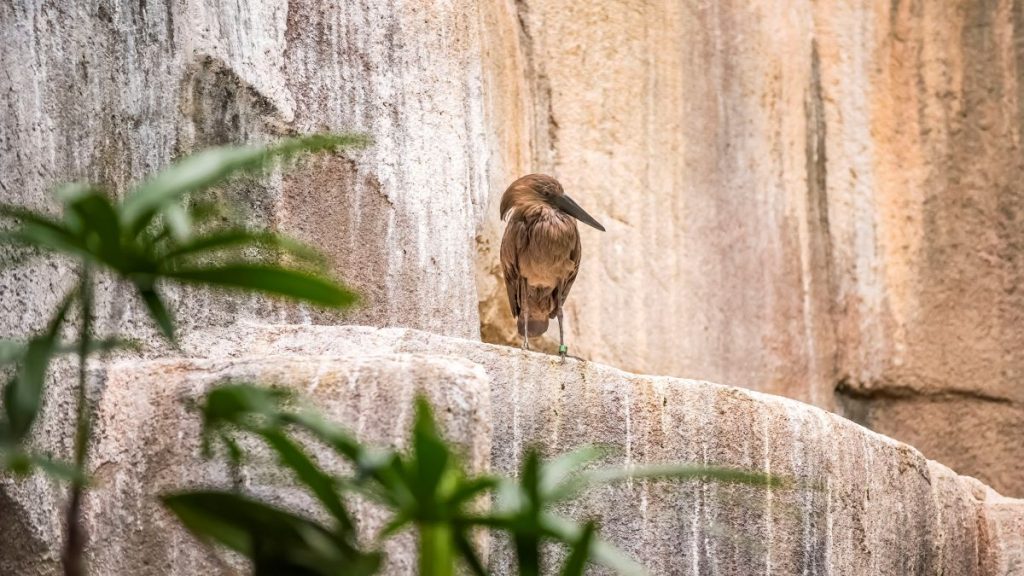
Hamerkops perch on top of hippos in the water and use them while hunting. This gives them access to deeper water they cannot wade in. Their nest is known for being the largest roofed nest of any bird species. It can be approximately 6 feet in width and height, which can support the weight of […]
Superb Starling
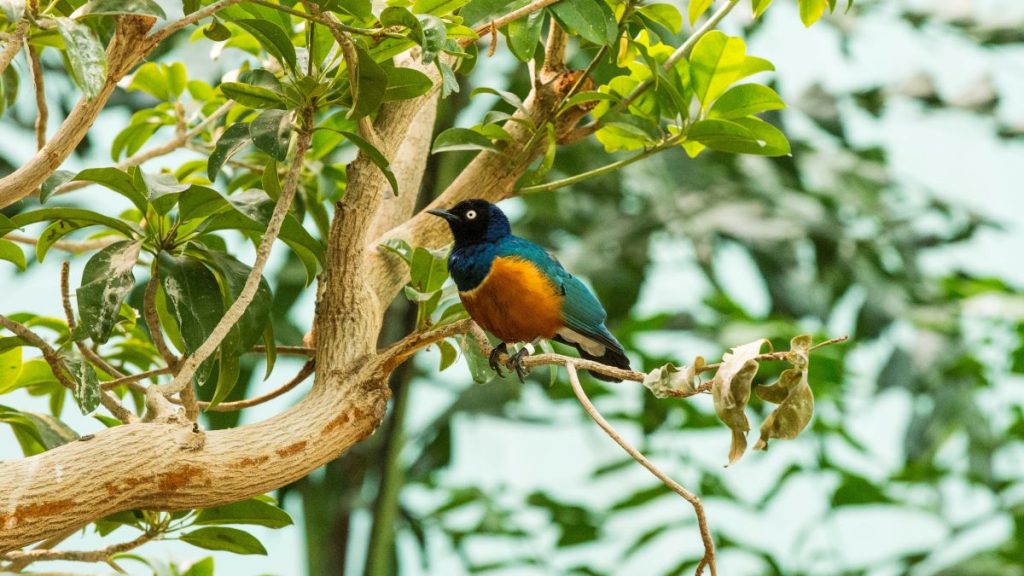
The superb starling has various calls — it can whistle, imitate other species, and has an alarm call that is loud and whining. Some songs may include as many as 82 distinct phrases. When females move to a new group, they will learn the songs and phrases of that group.
Inca Tern
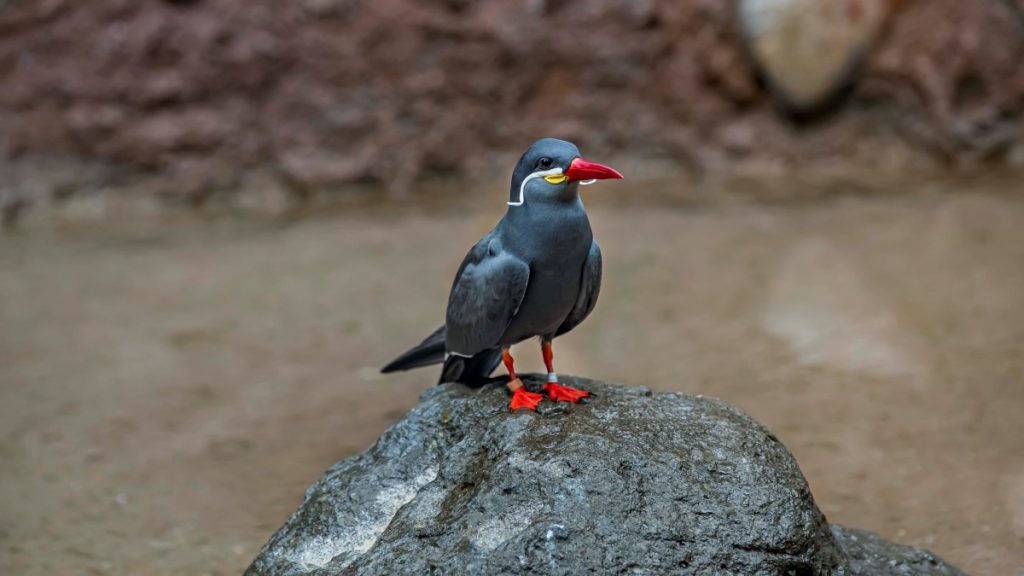
Inca terns are known for their prominent white mustaches, which are found on male and female birds. They’re located only near the cold waters of the Humboldt Current, where the birds feed on small fish. Inca terns feed by plunge diving and surface dipping.
Waldrapp Ibis
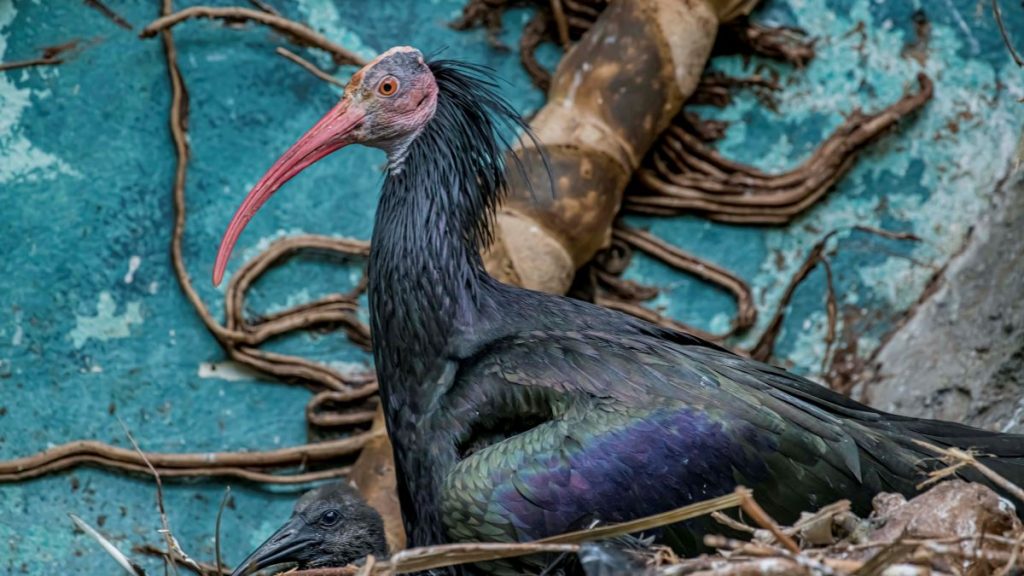
The Waldrapp ibis is also known as the northern bald ibis. They are social birds that gather in large flocks. Waldrapp ibises get together in colonies of 40 or more birds to breed, between February and May.
White-bellied Stork
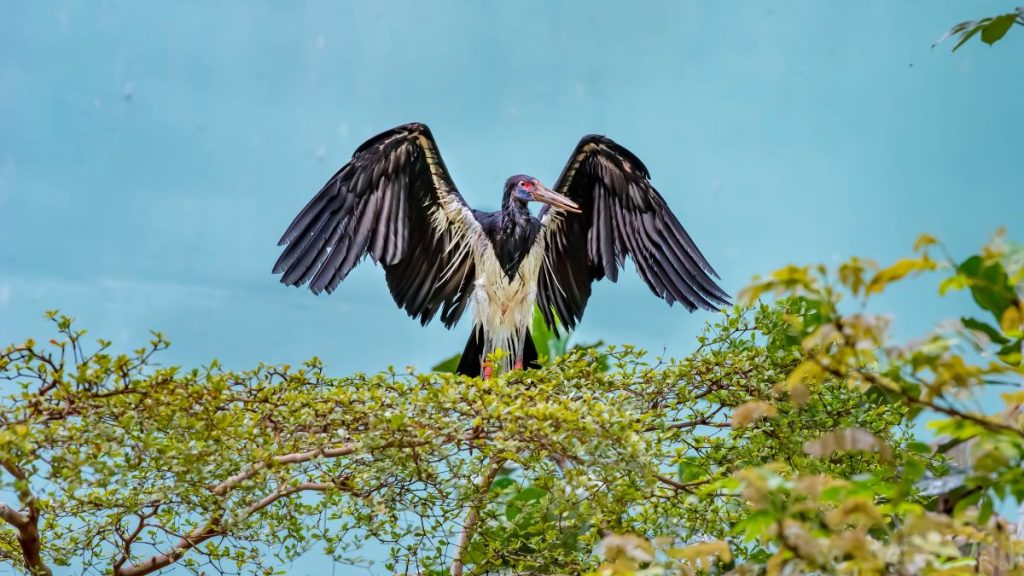
The white-bellied stork is also known as the Abdim’s stork. This bird is rarely seen in groups of less than ten birds and sometimes spotted in huge flocks of up to 10,000 individuals.
African Crested Guineafowl
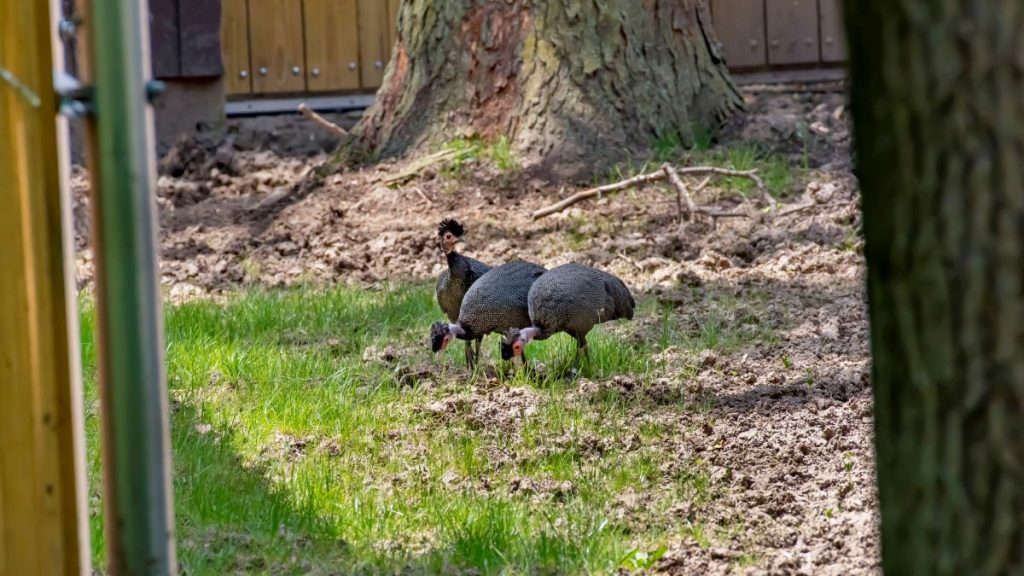
Also known as the eastern crested guineafowl, this distinctive bird has a chicken-size body covered in dark plumage with white spots. The skin around their eyes is red, while their petite head is topped by a mop-like crest of black feathers or “toupee.” Guineafowl are fairly talkative, social birds commonly found in flocks of 20, […]
Ostrich
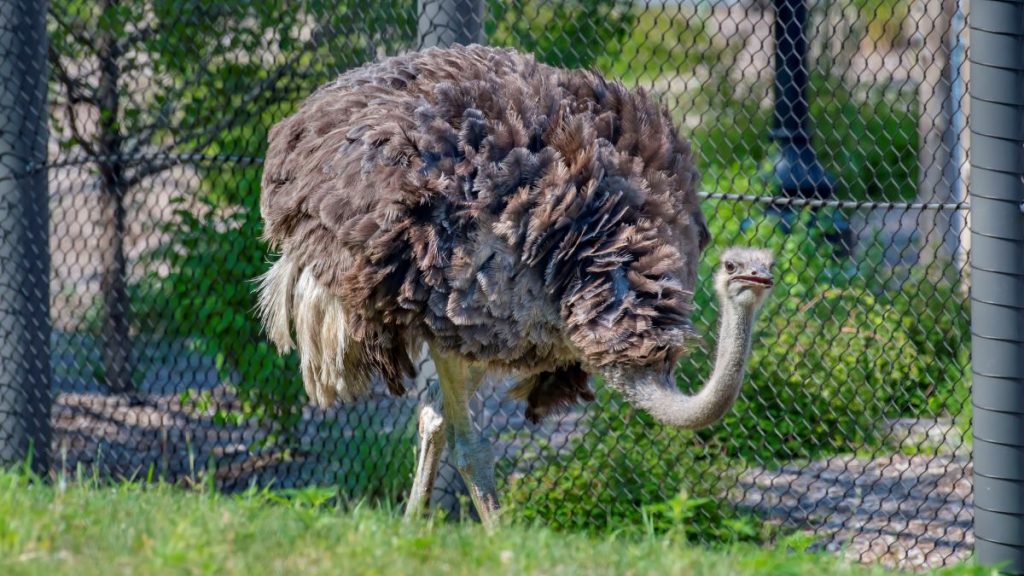
The ostrich is the world’s largest and heaviest living bird — but they are “flightless” and built for running. An ostrich’s stride can be 10-15 feet, and they can sprint at speeds up to 40 mph in short bursts. They can maintain a steady speed of 30 mph over distance too!
Crested Wood Partridge
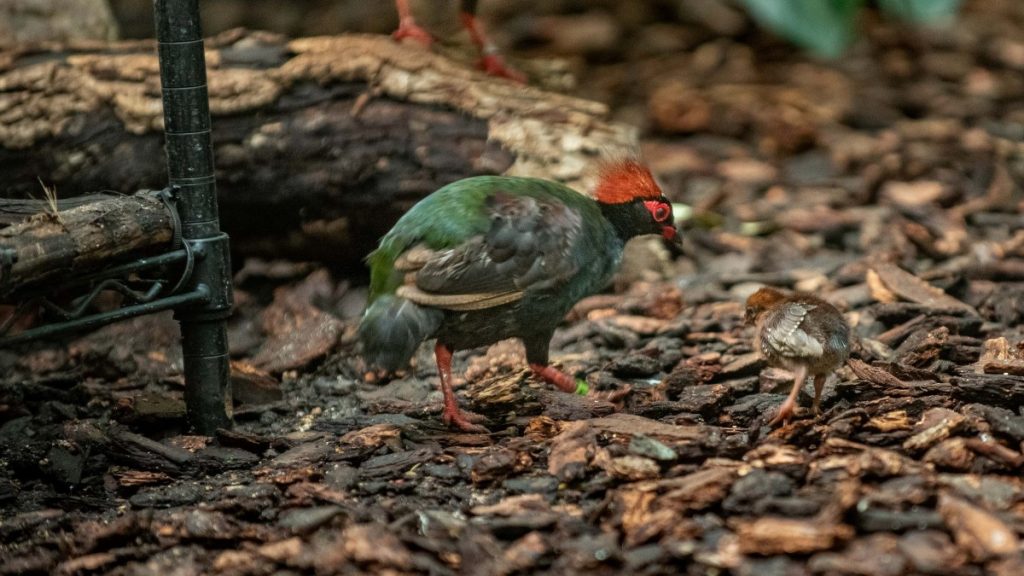
Crested wood partridges are only found in forested areas. They nest on the ground but roost in trees at night to avoid predators. In the wild, they are often found with wild pigs, feeding on fruits that the pigs leave behind.
Spotted Whistling Duck
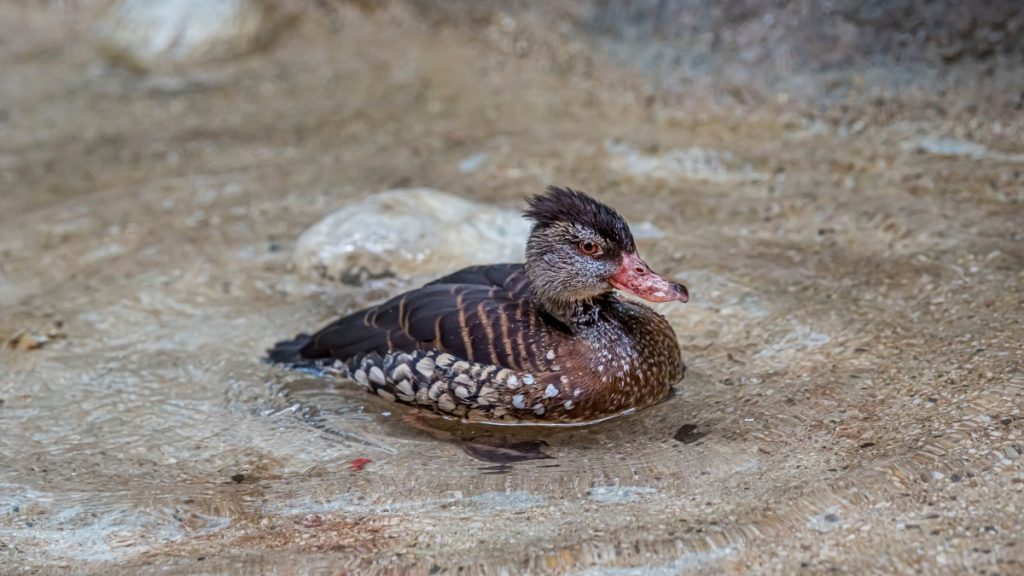
You guessed it! The spotted whistling duck is known for whistling and its spots. The spots are found on the neck, breast, and sides of its lower belly. Males and females look similar, but the young ducks don’t have as many spots.
Rockhopper Penguin
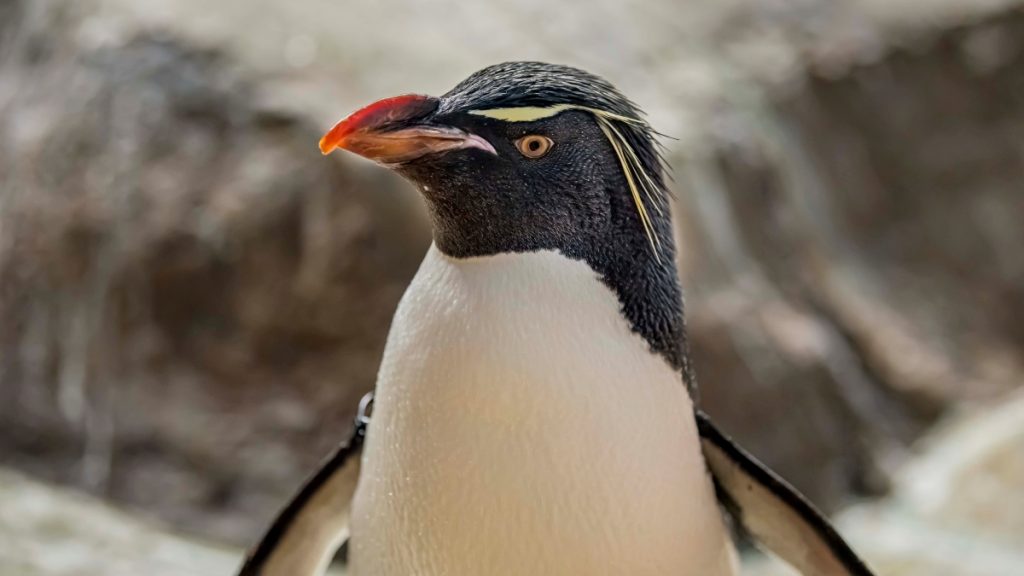
Rockhopper penguins earned their name from being seen jumping from rock to rock. They live on rocky shorelines and make burrows and nests in tall grasses. Breeding colonies may be large, with up to 100,000 nests at a single breeding site.
Blue-billed Teal

Blue-billed teals are one of the smallest ducks, as well as one of the smallest species of all waterfowl. They aren’t very vocal, but males do emit a high-pitched whistle and the female responds with a nasal quack. These teals eat by swimming with their bill in the water.
Green Aracari
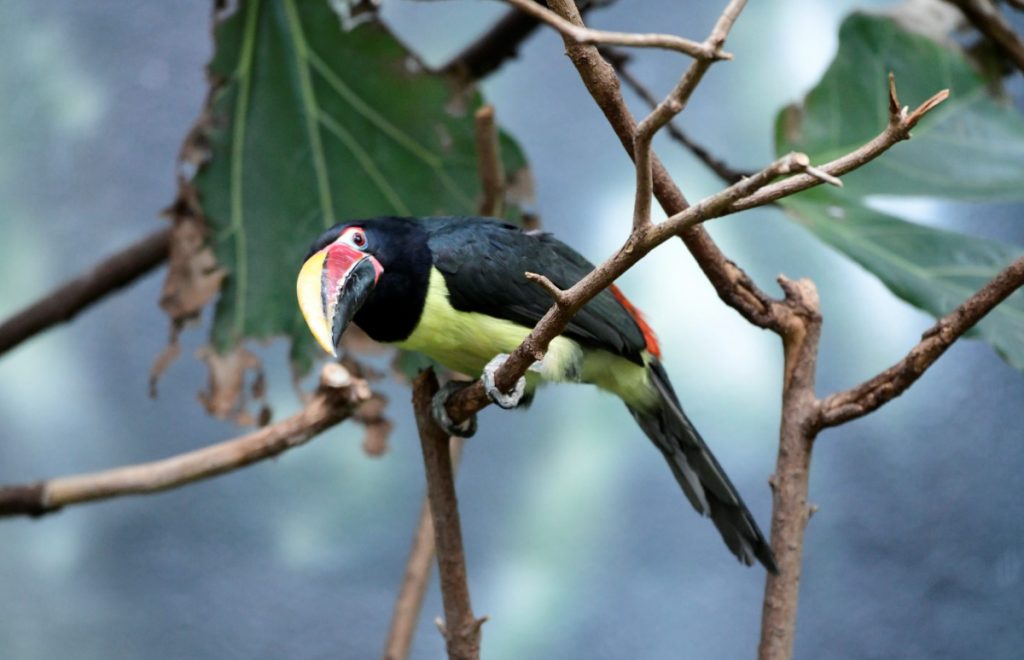
Smallest of the toucan family, green aracari have large, colorful bills with serrated edges that act like a knife to help hold and open fruit. The length of their bill allows the bird to increase their reach, allowing access to food not usually available. Like most toucans, green aracari don’t excavate their own nests in […]
Blue-crowned Motmot
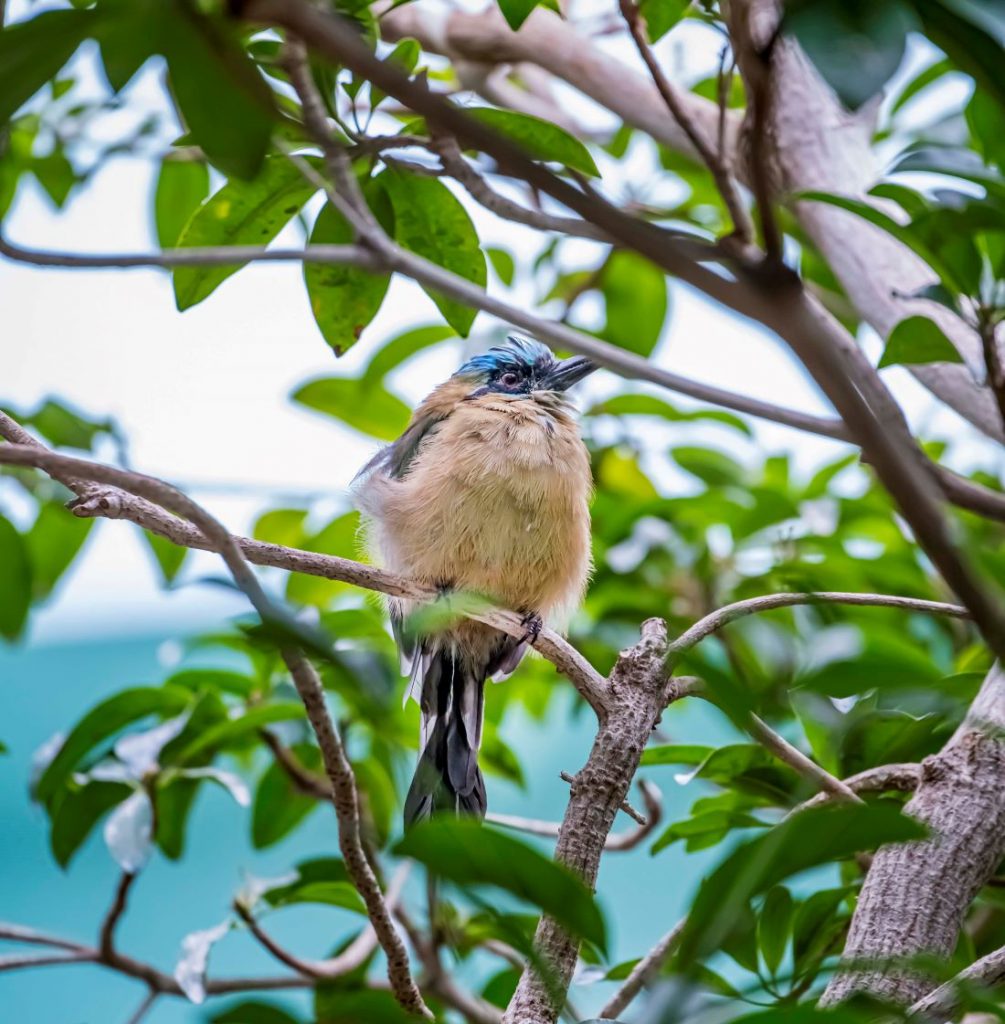
Easily recognizable by its long, racquet-shaped central tail feathers, the blue-crowned motmot can be seen perched on a branch, swinging these tail feathers back and forth like a pendulum. Motmots are most vocal at dawn, calling with a soft and monotonous “whoot whoot, whoot whoot.”
Bufflehead
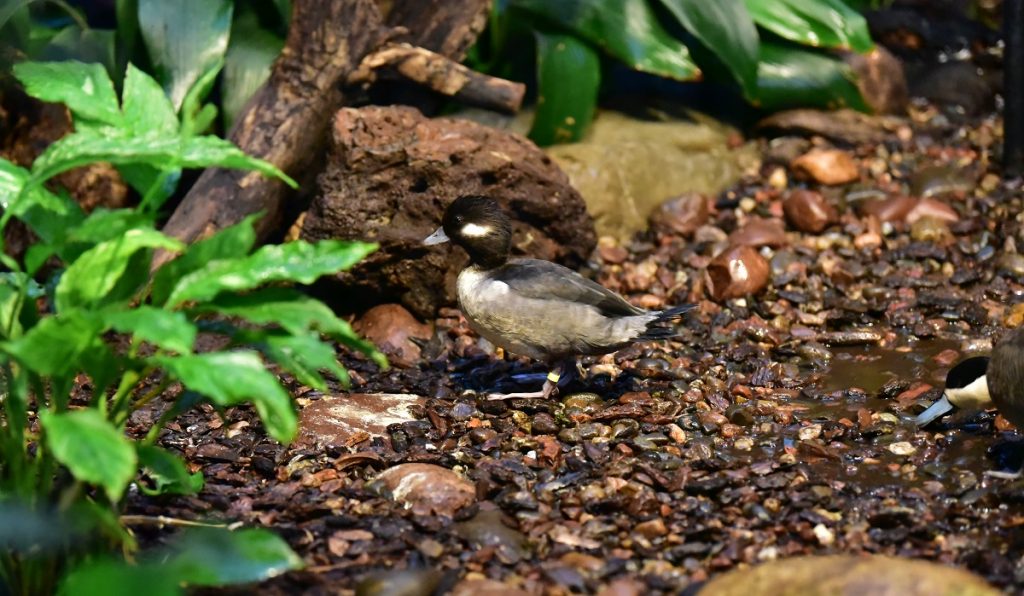
A buoyant, large-headed duck, the Bufflehead abruptly vanishes and resurfaces as it feeds. Unlike most ducks, the Bufflehead is mostly monogamous, often remaining with the same mate for several years. They nest in former woodpecker holes, particularly those made by Northern Flickers.
Puna Teal

Like most dabbling ducks (but unlike most Northern Hemisphere species), the sexes look similar year-round, although males on average are brighter and more boldly patterned. They have a distinctive light blue bill with a black line down the middle.
Red-capped Cardinal
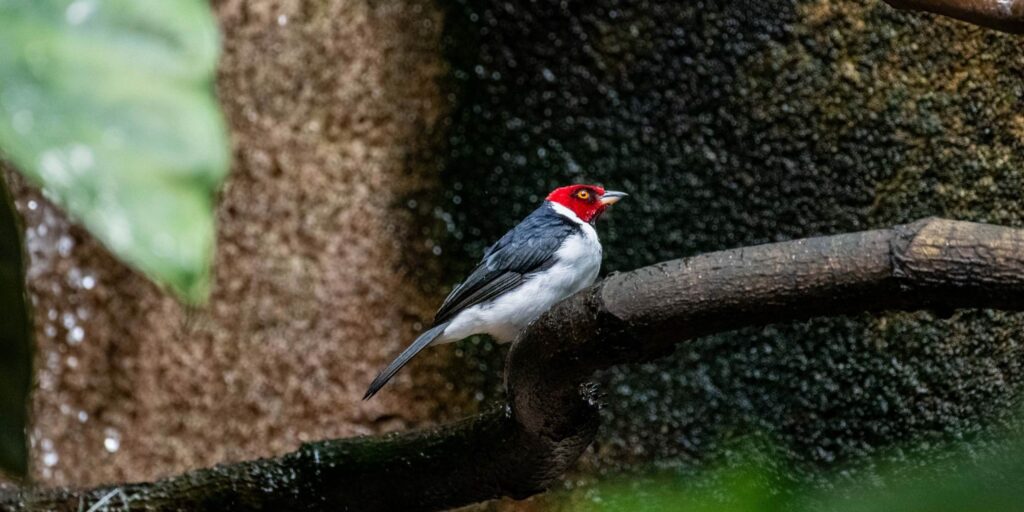
These songbirds have strong legs with large feet that allow them to walk on floating vegetation while feeding. Red-capped cardinals are quite social and often found in pairs or groups as they forage. Their bright red heads and black-and-white plumage make them quite distinctive.
Southern Ground Hornbill
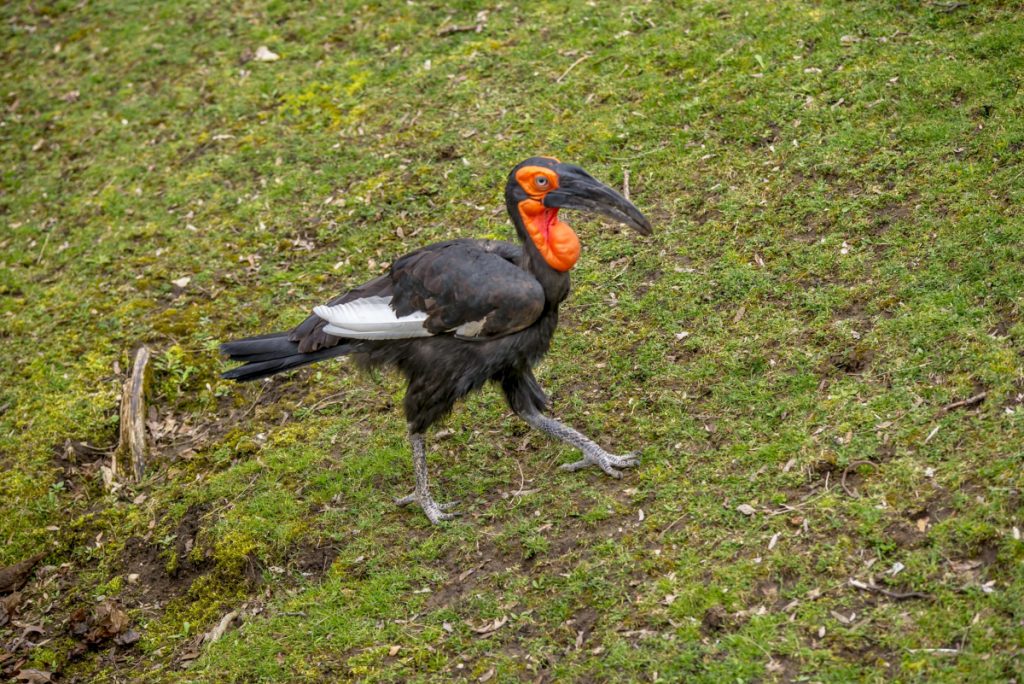
In their small social groups, dominant males typically earn the rights to most breeding, but all members of the group cooperate to raise the offspring. Female chicks leave the group after about two years, while the young males remain for about 10 years.
Cinereous Vulture
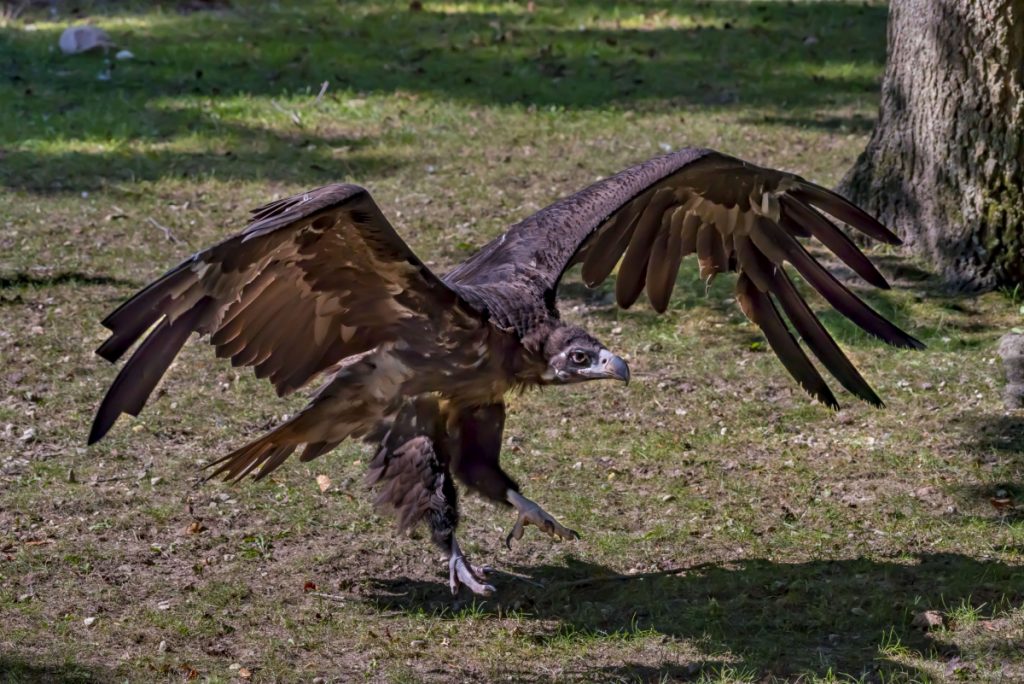
These vultures can stand up to 3 feet tall and have a wingspan measuring up to 10 feet across. Their massive beak is well-suited for feeding on tough material, such as sinew, dry skin, and muscle.
West African Black Crowned Crane

West African crowned cranes are locally regarded as an omen of rain because the birds migrate to temporary wetlands to breed as the rainy season begins. Both parents construct the nest in thick vegetation to hide the eggs and chicks from threats.
American White Pelican
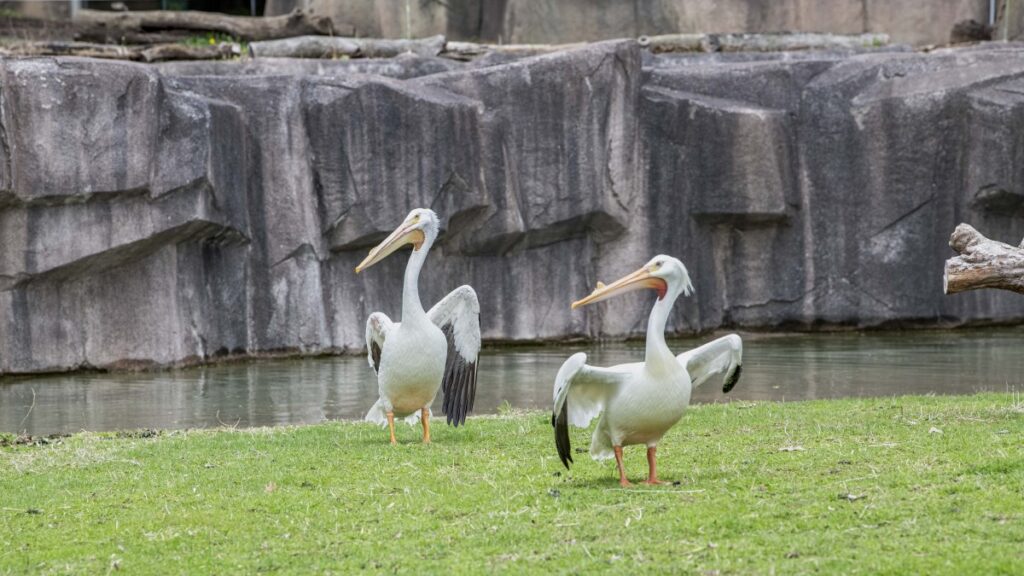
American white pelicans are some of the heaviest flying birds in the world. They rely on their large wings to soar great distances in large flocks. American white pelicans feed from the surface of the water, often hunting fish communally by circling their prey before plunging and scooping fish out of the water. They spend […]
Laysan Teal Duck
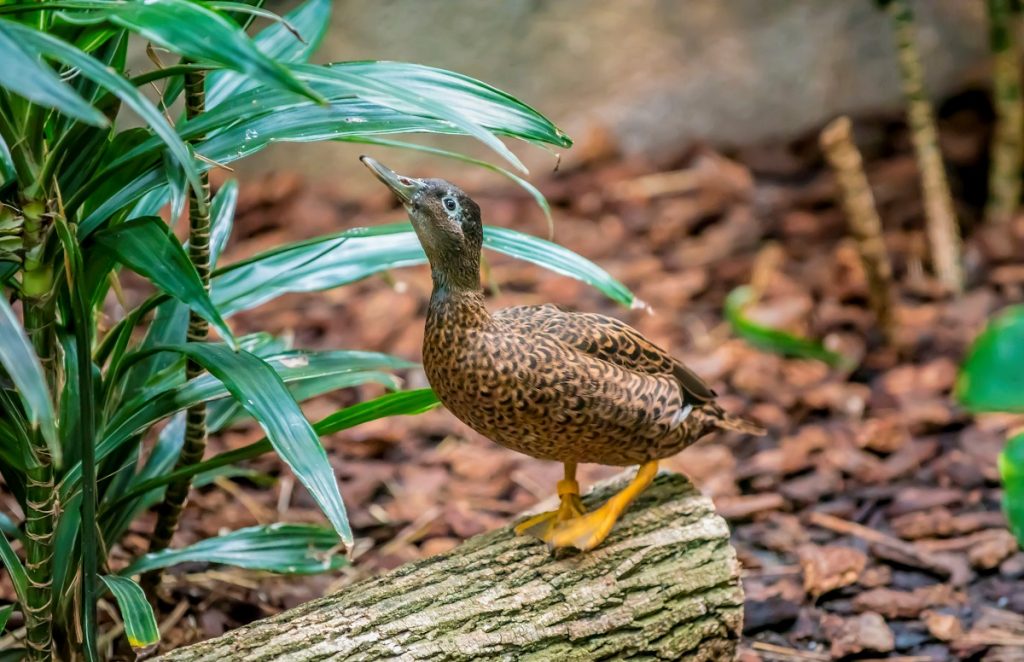
The color teal was actually named after the blaze of color found on this duck’s wings! In the past, about 200 years ago, these ducks resided on all the Hawaiian Islands. Today, they are only found on Laysan Island, which is just 1.5 miles in size.
East African Crowned Crane
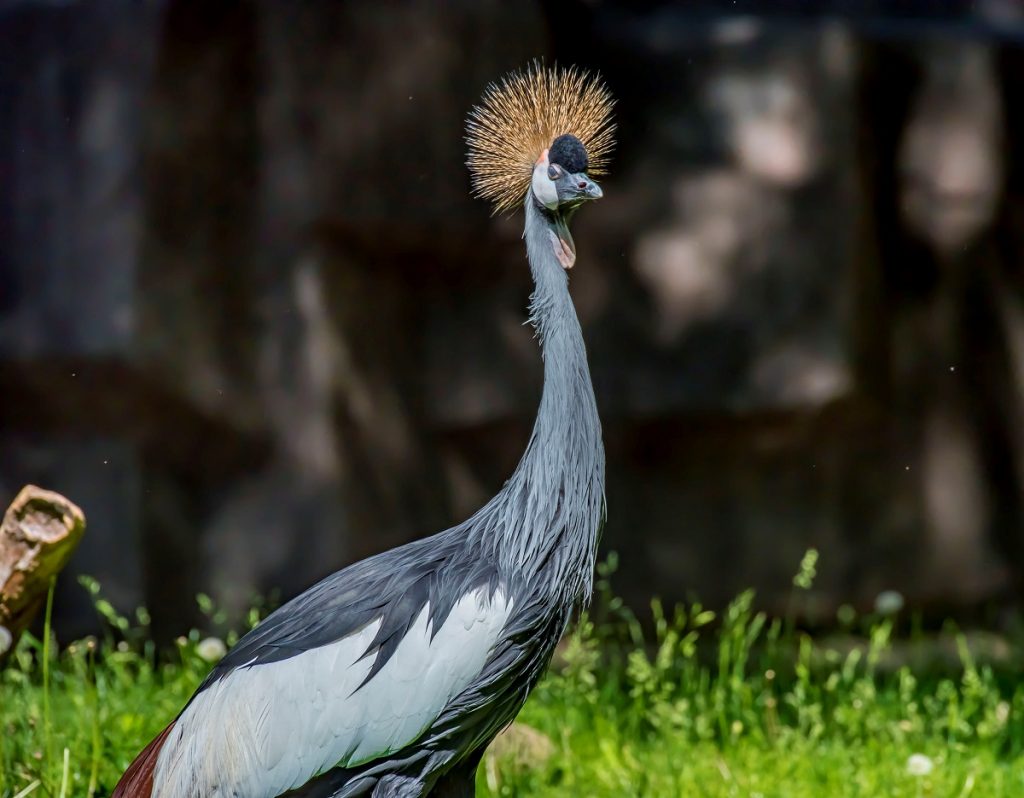
Also known as a gray crowned crane, this bird gets its name from the straw-yellow crown on its’ head. They’re omnivores and very, very hungry — they can spend their entire day looking for food. Unlike other cranes, East African crowned cranes nest in trees. As soon as the chicks hatch, they’re able to run.
American Avocet
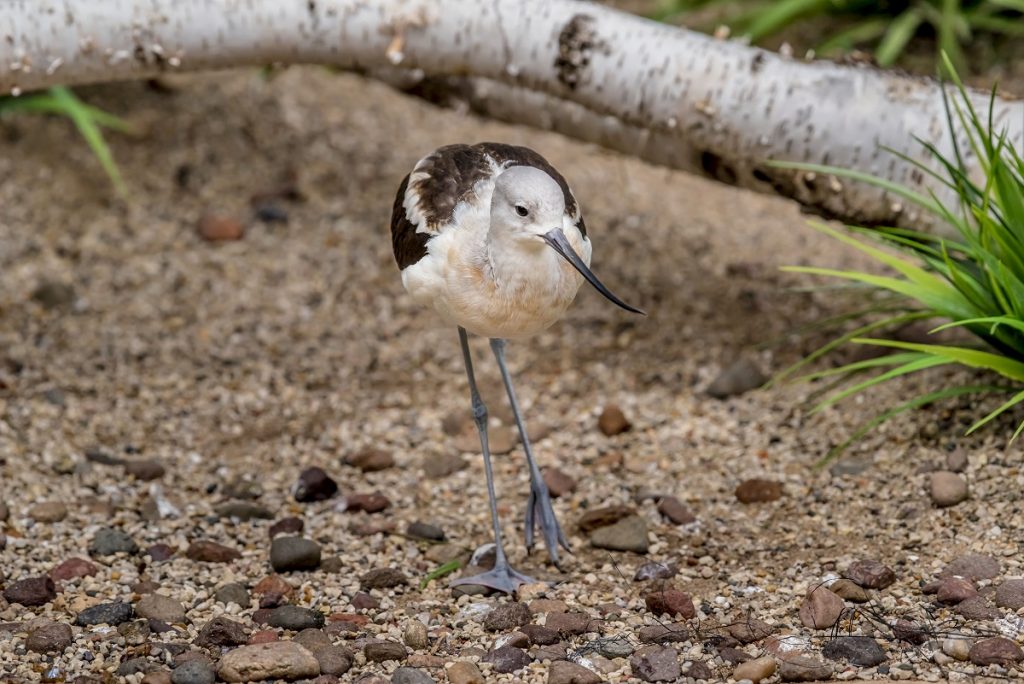
American avocets are long-legged shorebirds with a long, thin bill that curves upward and distinctive black-and-white stripes on their back and sides. They swoop with their long bills back and forth in the water to catch insects and aquatic crustaceans. They often travel in flocks of several hundred.
Gentoo Penguin
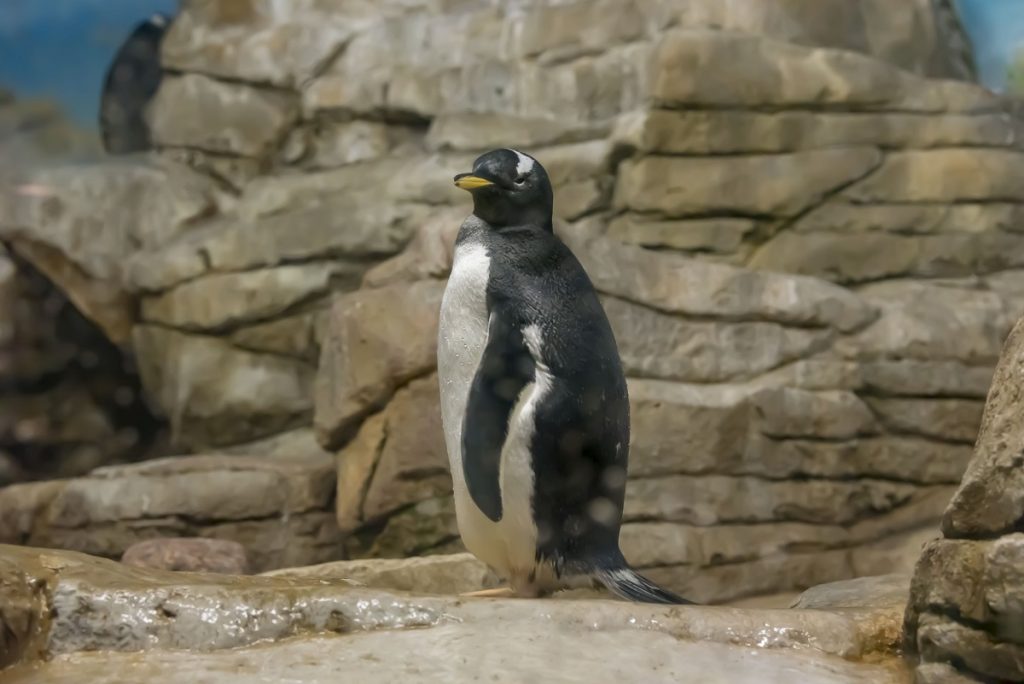
Gentoo penguins breed in colonies of a few hundred pairs and often construct their nests from rocks and anything else they can find in the harsh, Antarctic landscape. Gentoos can make as many as 500 dives a day searching for food! They’re a lot of fun to watch — keepers describe them as very curious, […]
Humboldt Penguin
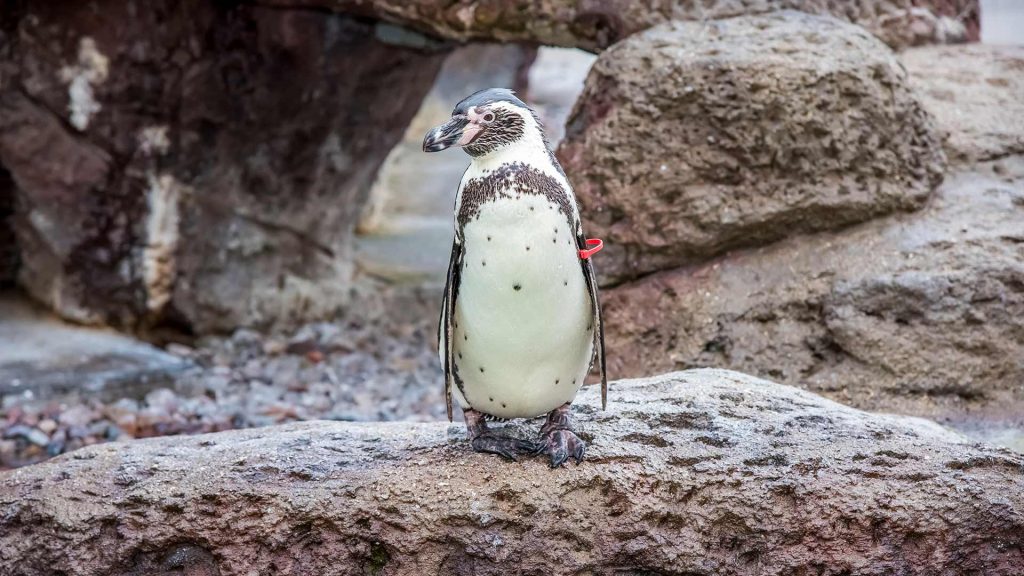
Humboldt penguins mate for life. They are extremely social animals and are often found in groups. They are also great swimmers and can reach speeds up to 20 miles per hour.
Whooping Crane
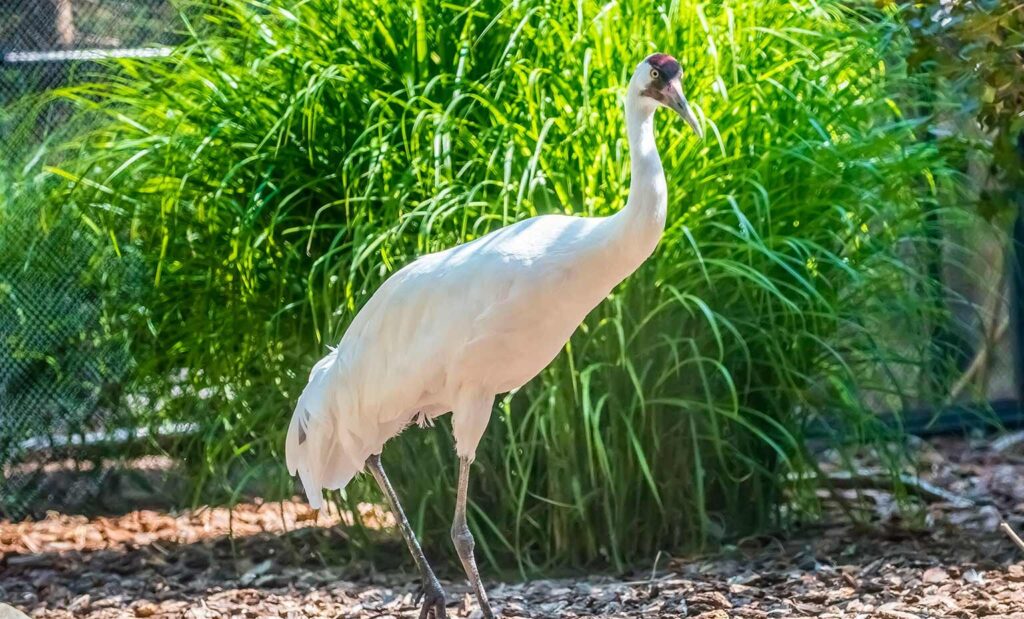
At roughly 60 inches in height, the whooping crane is the tallest bird in North America. Whooping cranes mate for life. The whooping crane’s courtship dance involves leaping, head-pumping, kicking, and wing-sweeping.